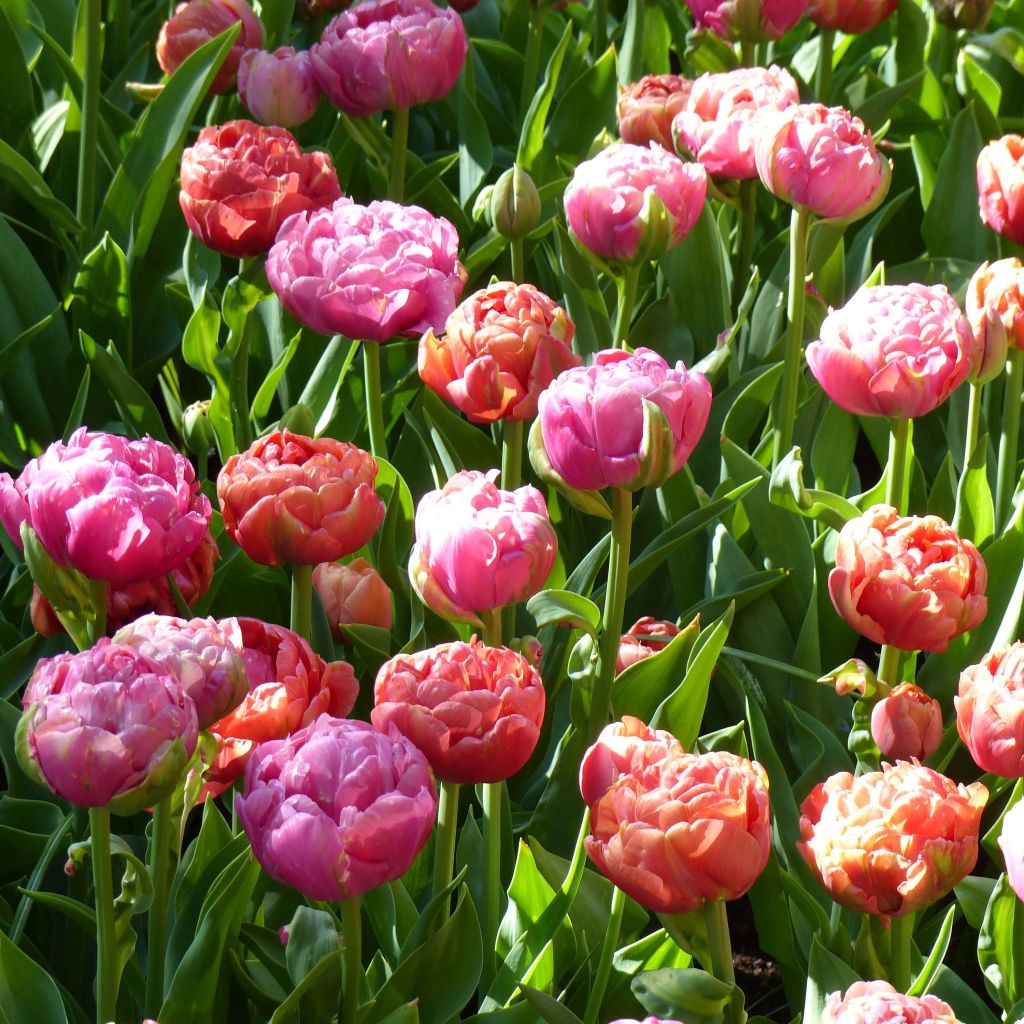

Duo of tulips Amazing Grace & Copper Image
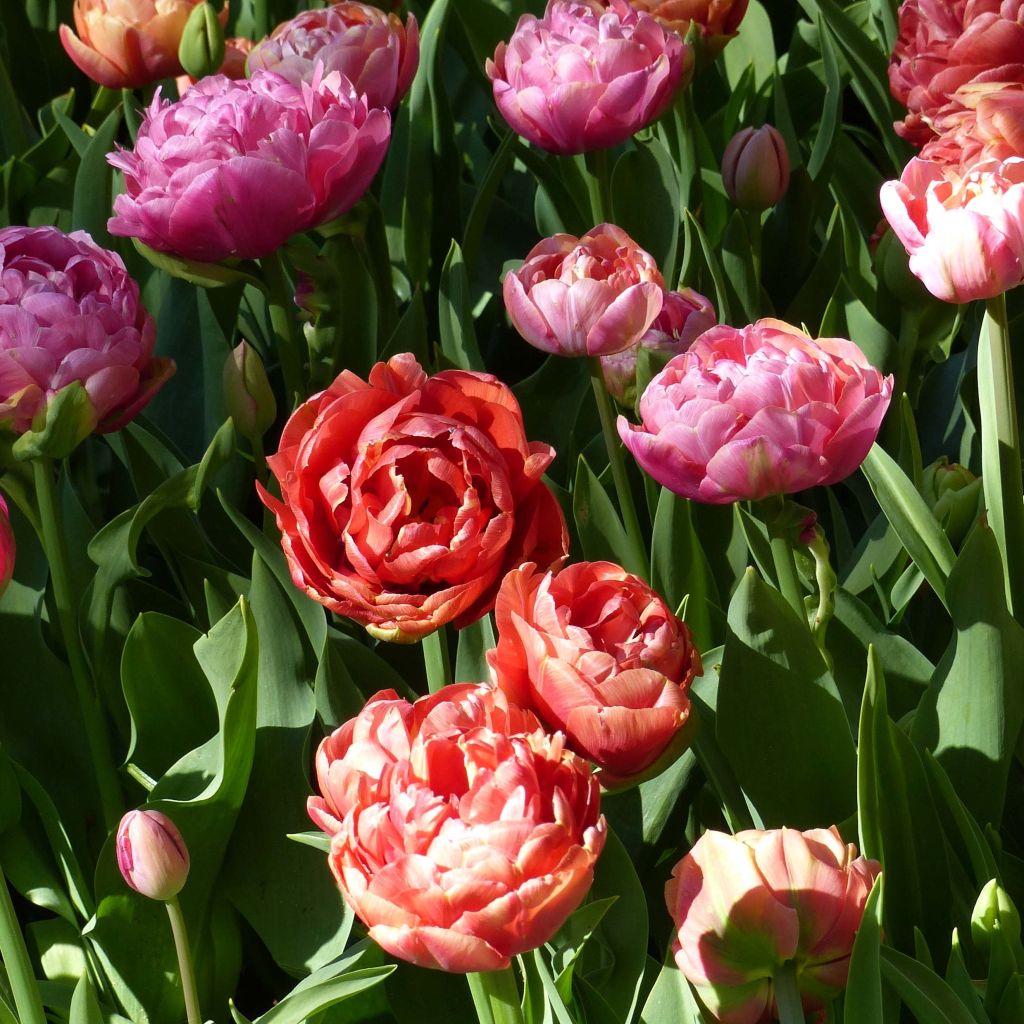

Duo of tulips Amazing Grace & Copper Image
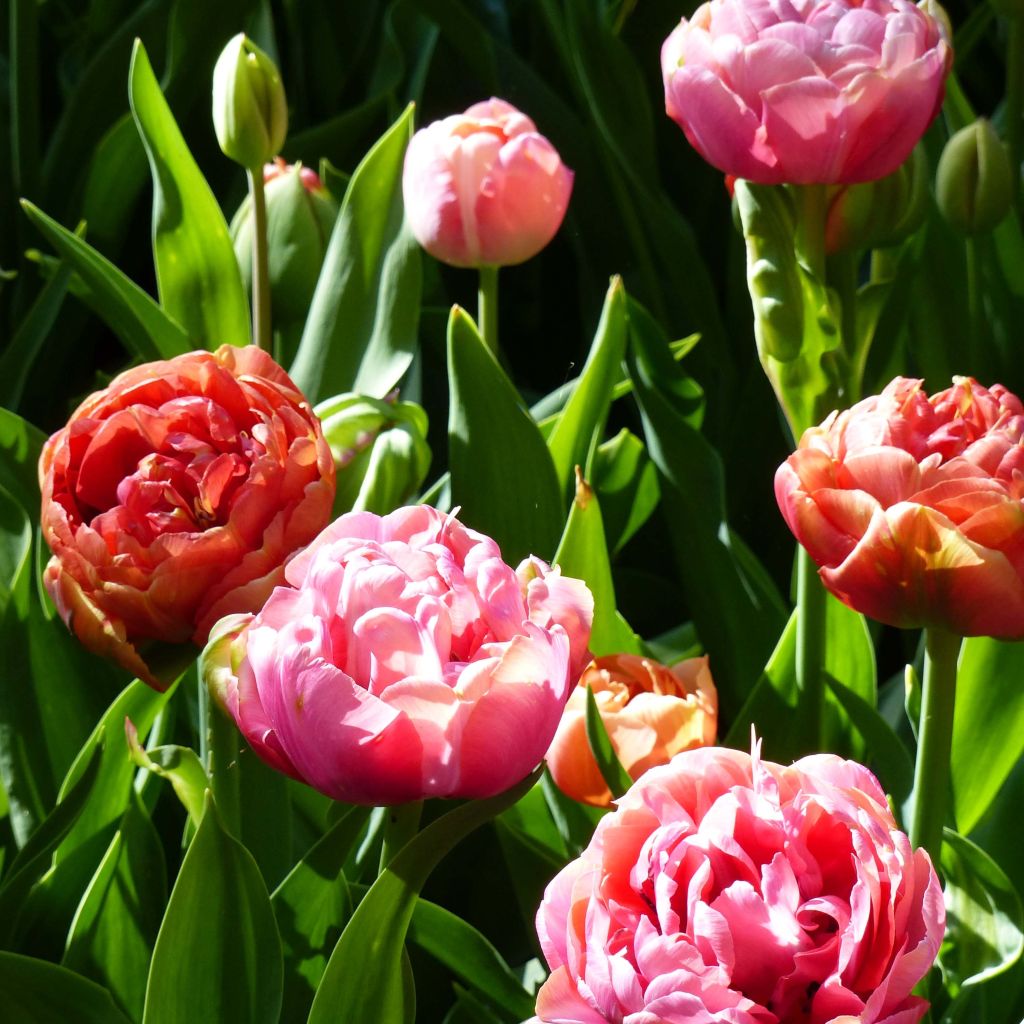

Duo of tulips Amazing Grace & Copper Image
Duo of tulips Amazing Grace & Copper Image
Tulipa double hâtive Amazing Grace et Copper Image
Forms part of the crushed young plant.
Olivia S., 01/10/2018
This plant carries a 6 months recovery warranty
More information
We guarantee the quality of our plants for a full growing cycle, and will replace at our expense any plant that fails to recover under normal climatic and planting conditions.
From €5.90 for pickup delivery and €6.90 for home delivery
Express home delivery from €8.90.
Does this plant fit my garden?
Set up your Plantfit profile →
Collection items (12 plants)
Description
Here is a wonderful duo of very recent tulips, bringing together two of the best early double varieties currently available on the market. The moving 'Amazing Grace' combines its big peony-like flowers with a changing pink colour, flamed with green on the outside, with those of 'Copper Image', endowed with an exceptional coppery rosewood color. Both bloom together, in April, at the same height, in a breathtaking whirl of petals.
This duo consists of:
6 x Amazing Grace Tulips
6 x Copper Image Tulips
Individually labeled.
The Amazing Grace and Copper Image tulips belong to the Liliaceae family. They are currently classified in the group of early double varieties, whose main characteristic is to bloom at the same height, making them a popular category for enthusiasts of well-arranged flowerbeds. Perched on strong stems of 35-40 cm (14-16in), just above the broadly lanceolate leaves, the very double flowers, at least 12 cm (5in) wide, open almost flat. The flowering takes place in April, in the middle of the tulip season. The flowers of Amazing Grace open in lavender pink flamed with green on the outside and mature into a true pink, much deeper. Those of 'Copper Image' amaze with their unique colour, intermediate between copper and pink with a touch of burnt orange and a hint of green on the outside.
Rich in colours and resistant flowers, for both flowerbeds and to enhance your bouquets, the reputation of peony-like double early tulips is well established. It is no coincidence that they are among the most commonly used varieties for cut flowers. Unmatched for bringing the colour of spring to pots or sunny gardens, do not forget to consider the height and flowering period of tulips when designing your flowerbeds, as these parameters vary significantly from one cultivar to another. It is wise to plant a few more bulbs for cutting, as they make beautiful cut flowers that last a long time in a vase. This duo pairs beautifully with the blue flowers of muscari, blue, pink or white, or with wood hyacinths, blue or pink.
Report an error about the product description
Duo of tulips Amazing Grace & Copper Image in pictures
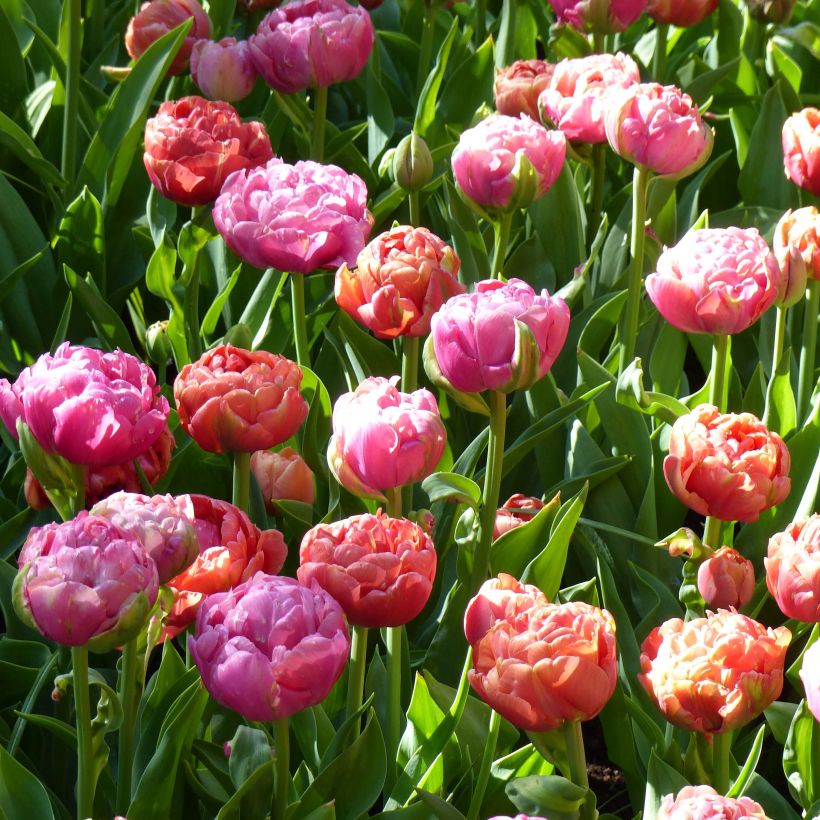

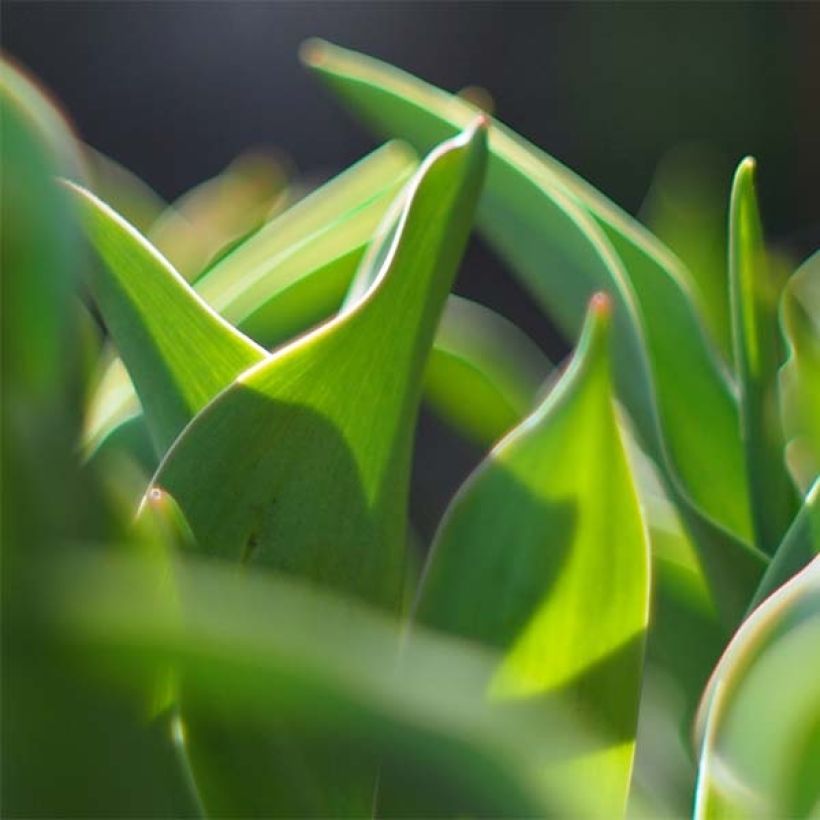

Plant habit
Flowering
Foliage
Botanical data
Tulipa
double hâtive
Amazing Grace et Copper Image
Liliaceae
Cultivar or hybrid
Planting and care
Plant your bulbs as soon as possible in a well-drained soil. Loosen the soil. Plant at a depth of 10 cm (4in). Bulbs should be covered with twice their height of soil. Space the bulbs a few cm apart, making sure they do not touch each other. Choose a sunny location for better flowering. After flowering, cut the flower stems and allow the leaves to dry completely before cutting them.
Planting period
Intended location
Care
-
, onOrder confirmed
Reply from on Promesse de fleurs
Haven't found what you were looking for?
Hardiness is the lowest winter temperature a plant can endure without suffering serious damage or even dying. However, hardiness is affected by location (a sheltered area, such as a patio), protection (winter cover) and soil type (hardiness is improved by well-drained soil).

Photo Sharing Terms & Conditions
In order to encourage gardeners to interact and share their experiences, Promesse de fleurs offers various media enabling content to be uploaded onto its Site - in particular via the ‘Photo sharing’ module.
The User agrees to refrain from:
- Posting any content that is illegal, prejudicial, insulting, racist, inciteful to hatred, revisionist, contrary to public decency, that infringes on privacy or on the privacy rights of third parties, in particular the publicity rights of persons and goods, intellectual property rights, or the right to privacy.
- Submitting content on behalf of a third party;
- Impersonate the identity of a third party and/or publish any personal information about a third party;
In general, the User undertakes to refrain from any unethical behaviour.
All Content (in particular text, comments, files, images, photos, videos, creative works, etc.), which may be subject to property or intellectual property rights, image or other private rights, shall remain the property of the User, subject to the limited rights granted by the terms of the licence granted by Promesse de fleurs as stated below. Users are at liberty to publish or not to publish such Content on the Site, notably via the ‘Photo Sharing’ facility, and accept that this Content shall be made public and freely accessible, notably on the Internet.
Users further acknowledge, undertake to have ,and guarantee that they hold all necessary rights and permissions to publish such material on the Site, in particular with regard to the legislation in force pertaining to any privacy, property, intellectual property, image, or contractual rights, or rights of any other nature. By publishing such Content on the Site, Users acknowledge accepting full liability as publishers of the Content within the meaning of the law, and grant Promesse de fleurs, free of charge, an inclusive, worldwide licence for the said Content for the entire duration of its publication, including all reproduction, representation, up/downloading, displaying, performing, transmission, and storage rights.
Users also grant permission for their name to be linked to the Content and accept that this link may not always be made available.
By engaging in posting material, Users consent to their Content becoming automatically accessible on the Internet, in particular on other sites and/or blogs and/or web pages of the Promesse de fleurs site, including in particular social pages and the Promesse de fleurs catalogue.
Users may secure the removal of entrusted content free of charge by issuing a simple request via our contact form.
The flowering period indicated on our website applies to countries and regions located in USDA zone 8 (France, the United Kingdom, Ireland, the Netherlands, etc.)
It will vary according to where you live:
- In zones 9 to 10 (Italy, Spain, Greece, etc.), flowering will occur about 2 to 4 weeks earlier.
- In zones 6 to 7 (Germany, Poland, Slovenia, and lower mountainous regions), flowering will be delayed by 2 to 3 weeks.
- In zone 5 (Central Europe, Scandinavia), blooming will be delayed by 3 to 5 weeks.
In temperate climates, pruning of spring-flowering shrubs (forsythia, spireas, etc.) should be done just after flowering.
Pruning of summer-flowering shrubs (Indian Lilac, Perovskia, etc.) can be done in winter or spring.
In cold regions as well as with frost-sensitive plants, avoid pruning too early when severe frosts may still occur.
The planting period indicated on our website applies to countries and regions located in USDA zone 8 (France, United Kingdom, Ireland, Netherlands).
It will vary according to where you live:
- In Mediterranean zones (Marseille, Madrid, Milan, etc.), autumn and winter are the best planting periods.
- In continental zones (Strasbourg, Munich, Vienna, etc.), delay planting by 2 to 3 weeks in spring and bring it forward by 2 to 4 weeks in autumn.
- In mountainous regions (the Alps, Pyrenees, Carpathians, etc.), it is best to plant in late spring (May-June) or late summer (August-September).
The harvesting period indicated on our website applies to countries and regions in USDA zone 8 (France, England, Ireland, the Netherlands).
In colder areas (Scandinavia, Poland, Austria...) fruit and vegetable harvests are likely to be delayed by 3-4 weeks.
In warmer areas (Italy, Spain, Greece, etc.), harvesting will probably take place earlier, depending on weather conditions.
The sowing periods indicated on our website apply to countries and regions within USDA Zone 8 (France, UK, Ireland, Netherlands).
In colder areas (Scandinavia, Poland, Austria...), delay any outdoor sowing by 3-4 weeks, or sow under glass.
In warmer climes (Italy, Spain, Greece, etc.), bring outdoor sowing forward by a few weeks.




































